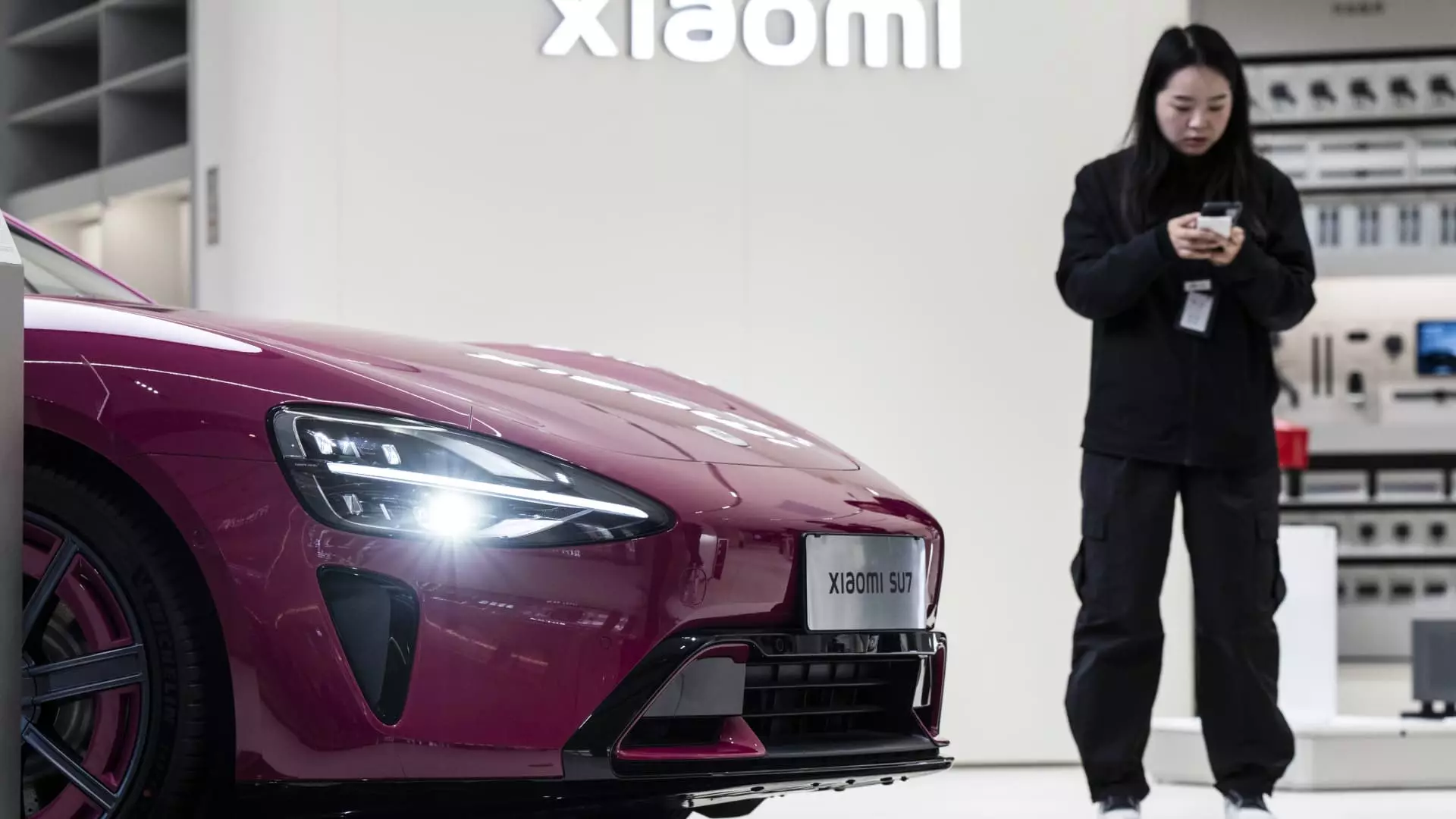The electric vehicle (EV) industry in China is undergoing seismic shifts, with companies like Xiaomi, Xpeng, and Leapmotor stepping into the spotlight. Recently, these companies have each reported delivering nearly 30,000 vehicles in March, illustrating their burgeoning capabilities and ambitions. With Xiaomi posting an impressive figure of over 29,000 cars, the competition is roaring to life, edging ahead of other startups that struggle to match such numbers. However, there’s an unsettling counter-narrative lurking beneath this success: the growing pains of rapid innovation and the associated risks; the recent crash involving Xiaomi’s flagship SU7 model serves as a stark reminder.
Underneath the surface of this race for dominance lies a complex relationship between innovation and safety. As these companies strive to scale up their manufacturing, questions about the reliability of their technologies resurface. The SU7, which was reportedly navigating on autopilot at the time of a tragic accident that claimed three lives, highlights critical dilemmas surrounding automated driving systems. The rush to control the electric vehicle marketplace must not overlook fundamental issues like safety and accountability. As we applaud the strides these companies are making, concern about their ethical responsibilities must be voiced.
The Unfolding Drama of Competition
The landscape is rapidly maturing, making room for established names while newcomers grapple for visibility. BYD continues to lead the charge with incredible sales figures, dwarfing the competition with a reported 371,419 passenger vehicles sold in March, witnessing remarkable year-over-year growth of 57.9%. Further emphasizing BYD’s dominance is its innovation—the introduction of the “Super e-Platform” technology, promising unparalleled range and rapid charging. This serves as a benchmark for other manufacturers who may find themselves merely watching from the sidelines, unable to catch up with BYD’s formidable lead.
Moreover, Xpeng, noted for its striking growth, delivered 33,205 vehicles in March, maintaining a streak of over 30,000 monthly deliveries. Similarly, Leapmotor achieved an astounding 37,095 units—a sign that even less recognized brands are rising to the occasion. Yet, what remains paramount is whether these achievements indicate a sustainable trajectory or merely a temporary spike spurred by market conditions.
Tesla’s Diminishing Influence
In contrast to the robust growth of Chinese automakers, Tesla is feeling the pinch. The U.S. electric vehicle frontrunner sold 78,828 cars in China in March, marking an 11.5% decline in year-over-year growth. This indicates not only a loss of momentum but also rising competition. Although Tesla’s brand recognition remains strong, it is vital for the company to reevaluate its strategies if it wishes to maintain its foothold in a market that is rapidly evolving.
What could displace Tesla’s once-unassailable position? The companies benefiting from a revived, highly competitive landscape are rapidly redefining market expectations. New players with agile strategies and local insights can disrupt even the biggest titans, necessitating continual adaptation to remain relevant. As Tesla faces this emerging battleground, the urgency for innovation and effective localization could not be clearer.
The Beauty and Burden of Rapid Growth
Ominously, the exponential growth of firms like Li Auto and Nio suggests that they must tread carefully. While Li Auto delivered 36,674 vehicles in March—a commendable feat—its growth rate pales in comparison to its peers. Similarly, Nio’s deliveries, though achieving a 40% annual increase, have not led to substantive leaps in market share. This raises questions about their long-term viability and whether they can successfully innovate in a landscape where competitors push the boundaries of technology and production.
With burdens of market pressures, workplace conditions, and environmental impacts looming, the electric vehicle industry must balance its exhilarating growth phase with responsible practices. A cultural shift should embrace ethical considerations that prioritize consumer safety, environmental sustainability, and responsible scaling of technologies.
In a space where electric vehicle makers flaunt their impressive delivery milestones, the conversation must evolve beyond raw numbers. The intricacies of technological advancement, ethical practice, and sustainability embody this central challenge. While it’s appropriate to acknowledge the rapid rise and promising perseverance of Xiaomi, Xpeng, and Leapmotor, we must remain vigilant about the shadows cast by their initial successes. As the electric vehicle sector marches forward, the true test will lie in navigating these uncharted waters with unwavering commitment to safety and responsibility.

